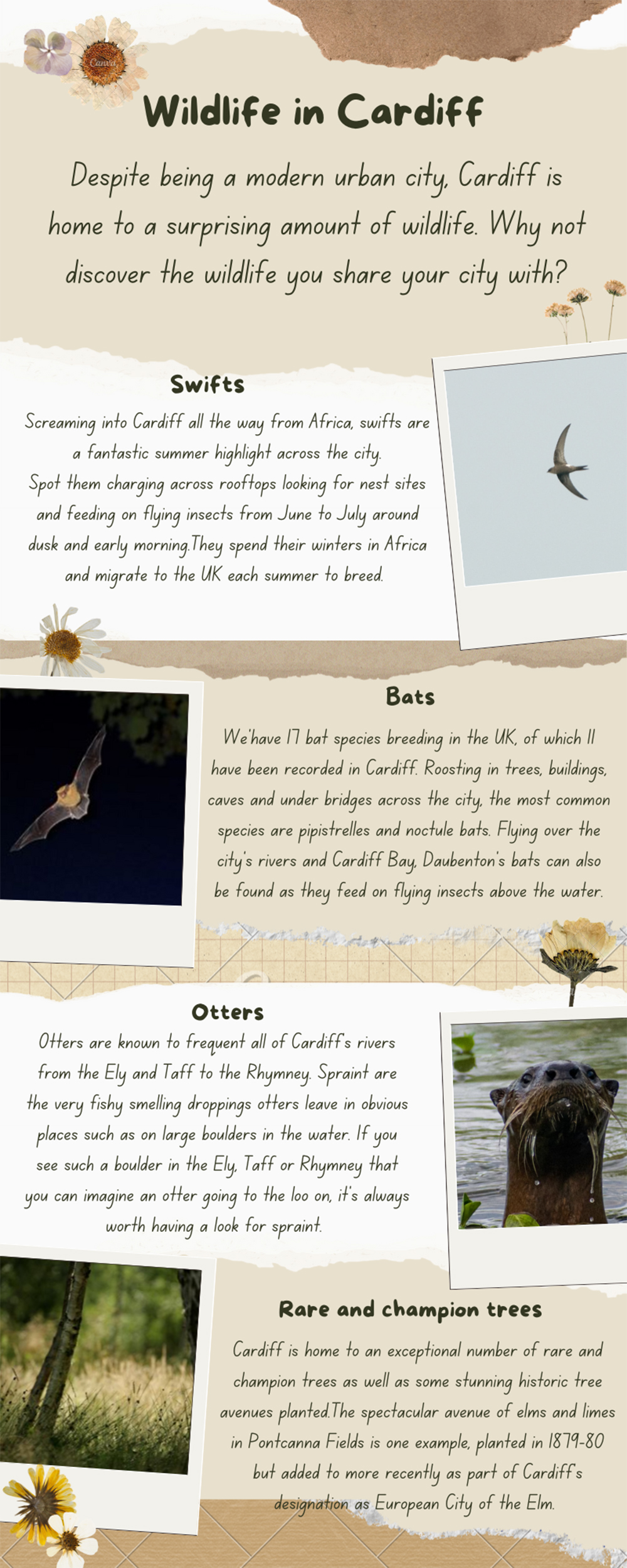As the BBC launches its latest nature series Wild Isles to celebrate the wildlife of the British and Ireland, how much nature can we find in Cardiff?
At a quiet midnight, a peregrine is standing still on the City Hall clock tower, looking up and down. Suddenly, the target locked, it flies higher to accelerate, then drops at its fastest speed to grab its prey.
Few people know that the world’s fastest animals have been living in the city centre for more than a decade. The word ‘peregrine’ comes from the ancient term for ‘foreign’ or ‘wanderer’. Though they travel widely, the homing instinct means they always return to their favoured place — high cliffs.
For them, the big stone clocktower is the perfect substitute. Thanks to the unique urban ecosystem, peregrines could breed and nest with adequate food and warm temperatures.
“We’ re very lucky to have many green corridors running through the city, such as Bute Park and Roath Park, running down to Cardiff Bay and the Rhymney River, which are very important for bringing much wildlife into the city,” said Dr Robert Thomas, who focus on animal behaviour in changing environments at Cardiff University.
Cardiff is a relatively small city. Parks between the countryside and the city provide a smooth channel for much wildlife to move, so that peregrines could not only have pigeons but eat a lot of wild ducks and water birds.
“Every week, we find these feathers of other species of birds. Through analysing the feathers from the birds the peregrines have eaten, we could study what their diet is across the year. Quite a big part of their diet is pigeons.” Robert said.
The abundance of pigeons in cities provides more prey compared to the countryside, and bright city lights at night make hunting and feeding easier.
Peregrines need to adapt flexibly to urbanisation. Robert explains: “There is a higher chance of disease in the preys, and the pigeons might be diseased then infect peregrines. Also due to noise pollution in the downtown, some birds might sing louder at a higher note, especially during the weekdays rush hour.”
Wildlife is quite common in urban life today. By constantly adjusting diet and behaviour patterns, they have found their habitat in modern cities.
But people’s imagination of wildlife seems to stay in the distance. As soon as the trailer of Wild Isles aired, it sparked people’s yearning for faraway places.
This five-part series reveals dramatic natural habitats that exist right in our country. One similar fact here is that a lot of amazing wildlife is not on distant isles, but in noisy and modern cities.

“People often feel educated and inspired by Sir David’s documentary, eager to find distant wildlife,” said Robert. “ On our doorstep, we’ve got the world’s fastest bird in the city centre, otters in the river Taff, and foxes in the Roath park, etc. You don’t have to travel to Africa or distant places; you can just walk outside, then see amazing wildlife very close and conserve them.”
